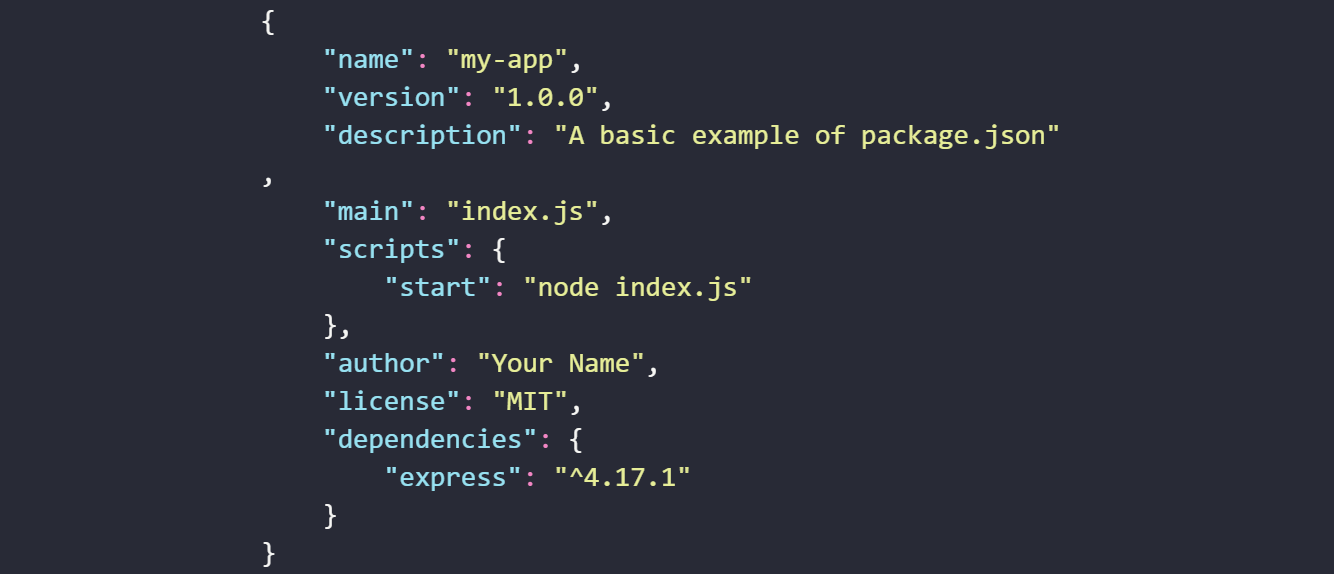Explaination of version range operators in package.json for package dependencies
To see the syntax and Railroad diagram version, goto here
Basic Structure
Package dependecies are a tuple of [major, minor, patch] with numeric values.
1 | |
Version Range operator
Basic Range
For x in exmaple, see Advanced Range below.
| Operator | Explaination | Example |
|---|---|---|
= |
package version must be exactly matched | 1.0.0 := =1.0.0(They are equivalent) |
< |
package version must be less than indicated | <2.0.0 :=version from 0.0.1 to 1.x.x |
<= |
package version must be less than or euqal to indicated | <=2.0.0 :=version from 0.0.1 to 2.0.0 |
> |
package version must be greater than indicated | >2.0.0:= version from 2.0.1 to x (x >= 2) |
>= |
package version must be greater than or euqal to indicated | >=2.0.0 :=version from 2.0.0 to x (x >= 2) |
|| |
joined one or more operator | >2.0.1 || <1.7.3 :=version greater than 2.0.1 or less than 1.7.3 |
space |
Intersected one or more operator | >=2.0.1 <=1.7.3 :=version from 2.0.1 to 1.7.3 (inclusive) |
Advanced Range
Advanced ranges may be combined in the same way as primitive comparators using space or ||.
| Operator | Explaination | Example |
|---|---|---|
X, x, * |
A Wildcard may be used for any values in the [major, minor, patch] tuple (missing value are consider using Wildcard x) |
* := (empty string) := >=0.0.01.x.x := 1.x := 1 := >=1.0.0 <2.0.0 |
- |
Specifies an inclusive set of package version | 1.2 - 2.3.4 := >=1.2.0 <=2.3.4 (missing pieces of first version are replaced with zeroes) 1.2.3 - 2.3 := >=1.2.3 <2.4.x(missing pieces of second version replace with X-range) |
~ |
Allows patch or minor level version changes, depends on specification |
~1.2.3 := any version starts with 1.2 and greater than 1.2.3~1.2 := any version starts with 1.2 (same as 1.2.x) |
^ |
Allows version changes in the [major, minor, patch] tuple without modify the left-most non-zero element. |
^1.2.3 := >=1.2.3 <2.0.0(minor update) ^0.2.3 := >=0.2.3 <0.3.0 (patch update) ^0.0.3 := >=0.0.3 <0.0.4(no updates) |
Further Explaination on Caret Ranges ^
Special interaction with Wildcard operator x
When parsing caret ranges, minor and patch values with wildcard x desugars to the number 0 (missing values are consider as x):
Example:
^1.2.x:=>=1.2.0 <2.0.0-0(equivalent to^1.2.0)^1.x:=>=1.0.0 <2.0.0-0(equivalent to^1.0.0)
However, when both major and minor versions are 0, Caret range allow flexibility within wildcard x:
Example:
^0.0.x:=>=0.0.0 <0.1.0-0(NOT equivalent to^0.0.0, but similar to^0.1.0)
Usage and Common Practices
Caret ranges usually ideally used when an author may make breaking changes. For example, between 0.2.4 and 0.3.0 releases, which is a common practice.
However, it presumes that there will not be breaking changes between 0.2.4 and 0.2.5. It allows for changes that are presumed to be additive (but non-breaking), according to commonly observed practices.
Further Reading: version range in npm-semver, setup-node in GitHub Actions
Explaination of version range operators in package.json for package dependencies



